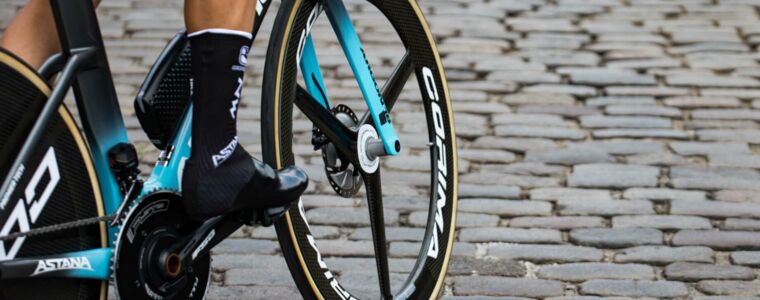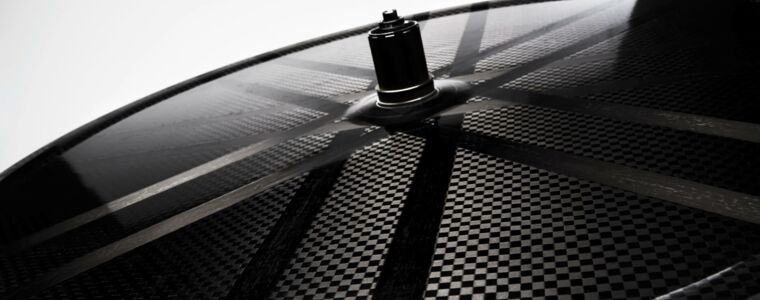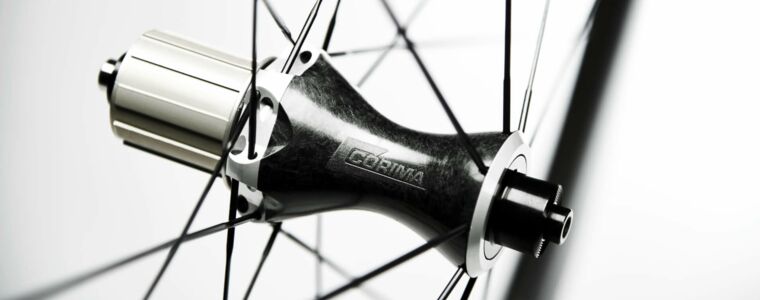The ABC of road bike wheels A simple guide to choosing your new road wheelset
After treating yourself to a beautiful, quality road bike, the best upgrade is without a doubt a new set of wheels.
The original wheelsets delivered with road bikes are often heavy, clunky and of rather low-quality. Swapping a bottom-of-the-range set of hoops for a pair suited to your requirements is a sure-fire way to gain weight and improve handling, and will instantly make an extreme difference to your cycling performance and enjoyment.
The choice of new wheels is a well-known dilemma and will depend your riding style, preferred terrain, competitive or recreational use, personal preferences and, to a certain extent, your budget.
A Aluminium
The original material used for bicycle wheels. More pliable than carbon, aluminum offers less stiffness and somewhat more comfort. Although heavy, wheels are generally sturdy and well-suited to rough roads, winter riding and commuting. Unless you are buying an ultra-light model for climbing, aluminum rims will not be your first choice for reactive performance.
B Brakes
There are two options in road cycling today: traditional rim brakes and the newer disc version.
- Rim brakes feature a caliper that squeezes two pads against the braking surface on the rim, effectively slowing the bike. This brake track will (very) slowly wear with use, and any unevenness will affect braking.
- Disc brakes use a rotor attached at hub level and have been around in mountain-biking for a long time. They have successfully been making their way into road cycling over the last few years. The slight weight penalty of the disc is often erased by a lighter rim (no need for a reinforced braking surface) and the advantage of extremely reactive braking even in wet conditions.

Choosing one or the other still comes down to personal preference, or what type of bike you already have. Rim brakes are traditionally efficient, intuitive and easy to maintain. Disc brakes set the new standard today, even in the pro peloton.
Our full article about rim vs. disc brakes is coming soon, make sure to come back and read it!
C Carbon
CORIMA was amongst the first, 32 years ago in 1988, to use carbon fiber technologies to design high-performance wheels. Not only does carbon save weight, it is also stiffer and more reactive. The great flexibility offered by carbon design has brought deeper rim sections, more freedom in spoke structure and greatly improved aerodynamics. Most high-end wheelsets today are made of carbon: from featherweight climbing wheels to versatile all-rounders, deep-rim aero models and even full discs.

H Hubs
Hubs are generally made of aluminum alloy. All CORIMA hubs are 100% machined in France to ensure flawless quality control. Optimal bearing quality requires a high degree of precision in the assembly of the mechanical parts, as well as meticulous maintenance.
The hubs spin thanks to bearings – usually annular ball bearings, made up of either steel rings and steel balls, or steel rings and ceramic balls. A high-class hub is a guarantee of longer lifespan, greater reliability and smoother riding. Ceramic bearings give an extra touch of high-performance fluidity, yet are more expensive and require greater maintenance.

*Note: Ensure your rear freehub is compatible with your drivetrain system.
R Rim (construction)
Rims are mostly hollow, and their construction will greatly influence the stiffness, durability and quality of your wheels. Aluminum rims have single or multiple-wall sections, while carbon rims also feature various technologies to improve performance. At CORIMA, we use our patented Torsion Box technology, which features a carbon fiber bar between the two rim walls for improved stiffness and strength, and structural foam in the rim cavities to provide additional damping without increasing weight.
R Rim (Depth)
Carbon wheels come in varying depths which greatly change performance. The routes you ride and intended use will steer you toward one or the other.
- Low-profile: <32mm. These wheels keep weight to a minimum and are ideal for those wanting to climb with agility and speed.
- Mid-section: 32-50mm. Offering greater aerodynamic performance without excessive weight, (not to mention an aggressive, pleasing aesthetic in many eyes), these are versatile across many terrains and have become a popular wheel choice amongst cyclists.
- Deep-section: >50mm. Heavier, aerodynamic and not really designed to climb, but impressive when rolling at high speeds. These wheels can be tough to handle in crosswinds and are usually kept for racing flatter triathlons and time trials.
R Rim (Width)
There is currently a trend toward wider rims, and by extension wider tires. Whereas a decade ago road bikes were fitted with 19-23mm wide tires, we often see 25 and even 28mm today. This improves wheel stiffness, reduces rolling resistance and increases comfort and control.
For those serious about aerodynamics, a rim width consistent with a chosen tire width also ensures a smoother transition from carbon to rubber. A less “bulbous” tire section makes for less drag as the wheel cuts through the air.
In numbers, most CORIMA wheelset have an external rim width of 26mm, ideal for 25mm tires.
R Rubber
You have three options to fit between your rim and the tarmac:
- Clinchers: the classic tire + inner tube combo is easy to fit with options for every budget and every performance level. Today, many tires offer very similar performance to tubulars.
- Tubulars: the “professional” option, with reduced overall wheel weight, low rolling resistance and exceptional road feel, yet not so convenient to repair and replace without a follow car...
- Tubeless: like an airtight clincher system requiring no inner tube, tubeless tires are popular in mountain biking and are slowly making their way to the road.
S Spokes
Spokes are tensioned between the hub and the rim and are absolutely instrumental for power transfer and wheel performance. Usually made from stainless steel, they can be flat or profiled for less air turbulence. Spoke nipples used to tension the spoke sit either outside (easier to access) or inside the rim (more aerodynamic and aesthetically-pleasing).
General wisdom claiming that fewer spokes mean weaker wheels may be true for lower-grade wheelsets. Yet 20 properly placed and tensioned spokes will offer even heavier riders all the sturdiness and performance required whilst saving weight.
Today, spokes can also be made of carbon, such as in the CORIMA MCC DX model. Expert design makes them extremely resistant with exceptional power transfer. Other high-performance wheels with only 3 or 4 carbon spokes offer outstanding inertia and aerodynamics but are best kept for competitive use (time trial, track and triathlon).

S Stickers (& Design)
There is science, and there is emotion. That is what cycling is about. After the choice of performance comes the aesthetic consideration.
WE KNOW, BECAUSE WE TAKE PRIDE IN DESIGNING WHEELS THAT ARE NOT ONLY EXCEPTIONAL, BUT ALSO LOOK THE PART.
And some of that part reflects the rider. That’s why you can personalize your CORIMA wheelset by choosing from a large palette of sticker colors.
Last words
Choose a wheelset that will add joy to your rides. Match it to your favorite routes, to your bike, to your style, or to all of the above… because at the end of the day, you ride for the love of it. And if you love your wheels they will take you faster and further. Quite simply.
